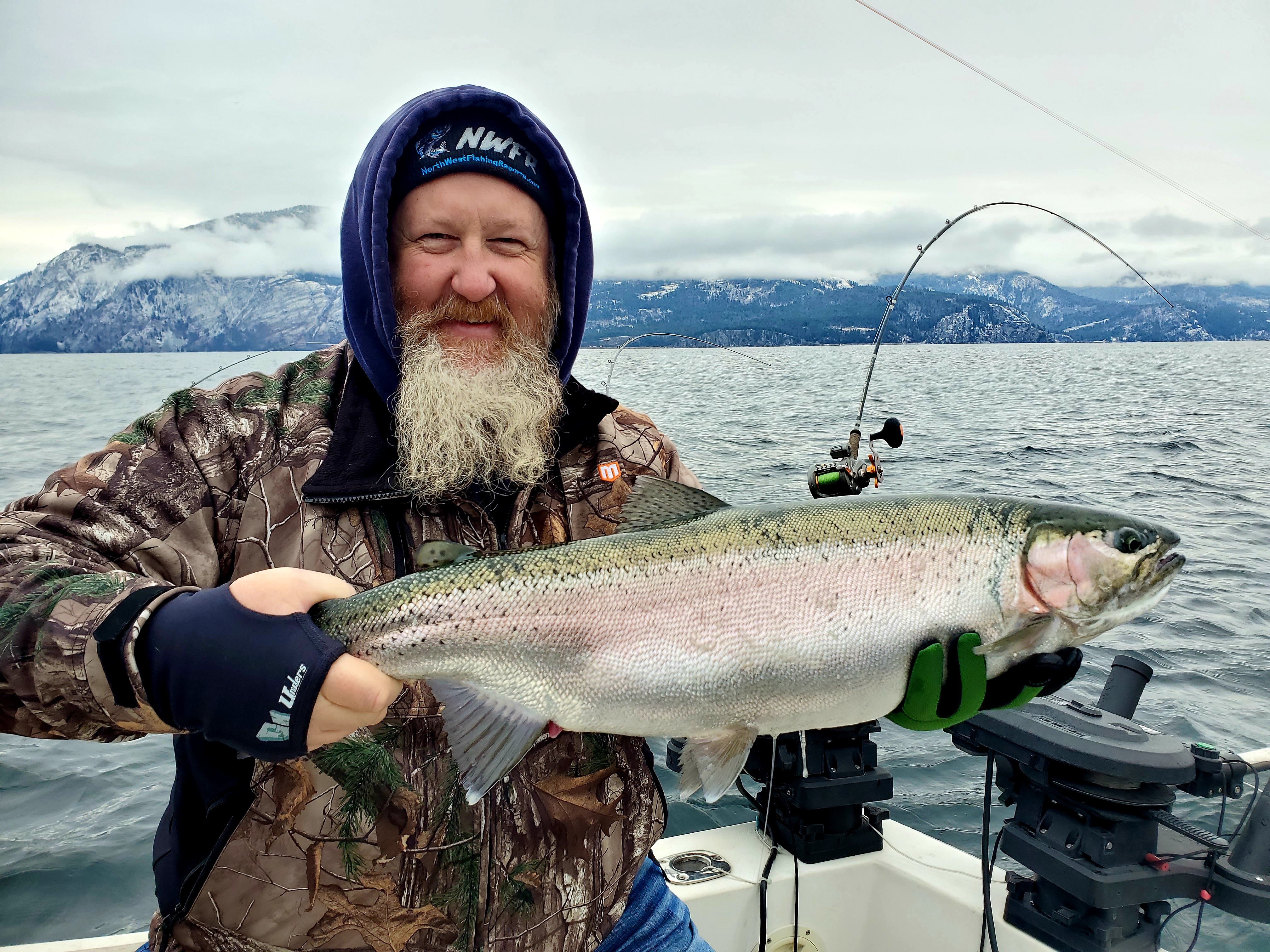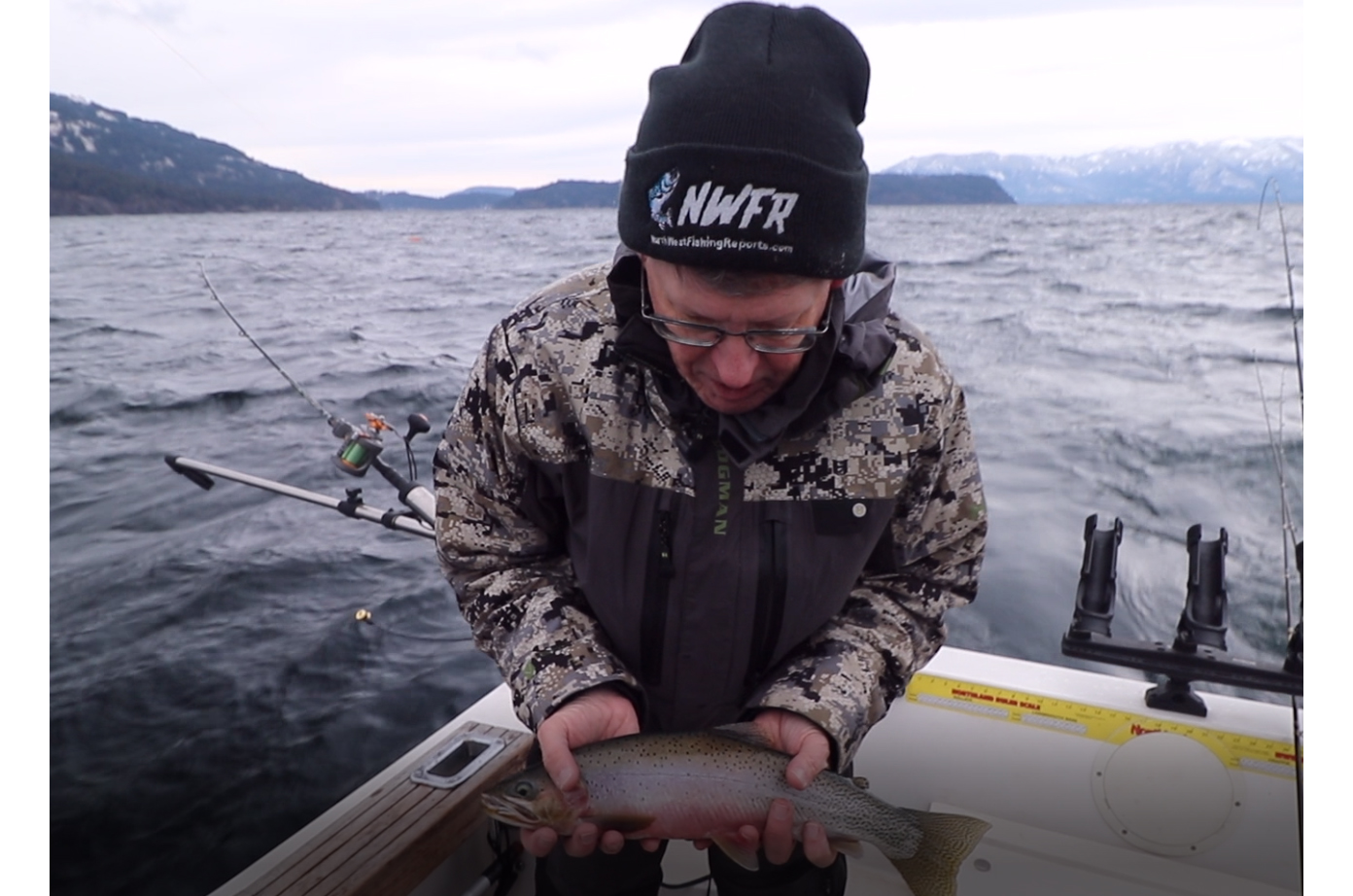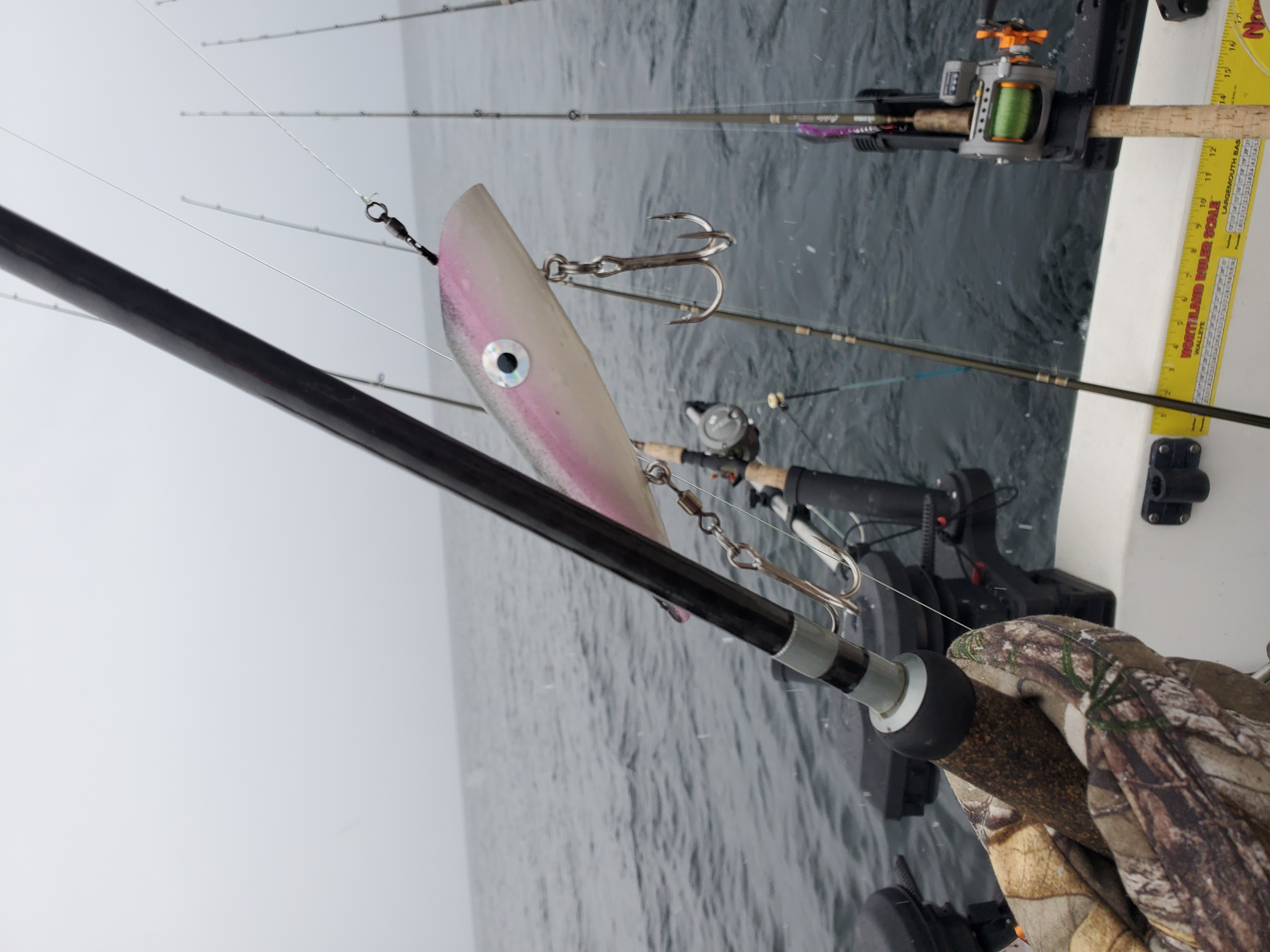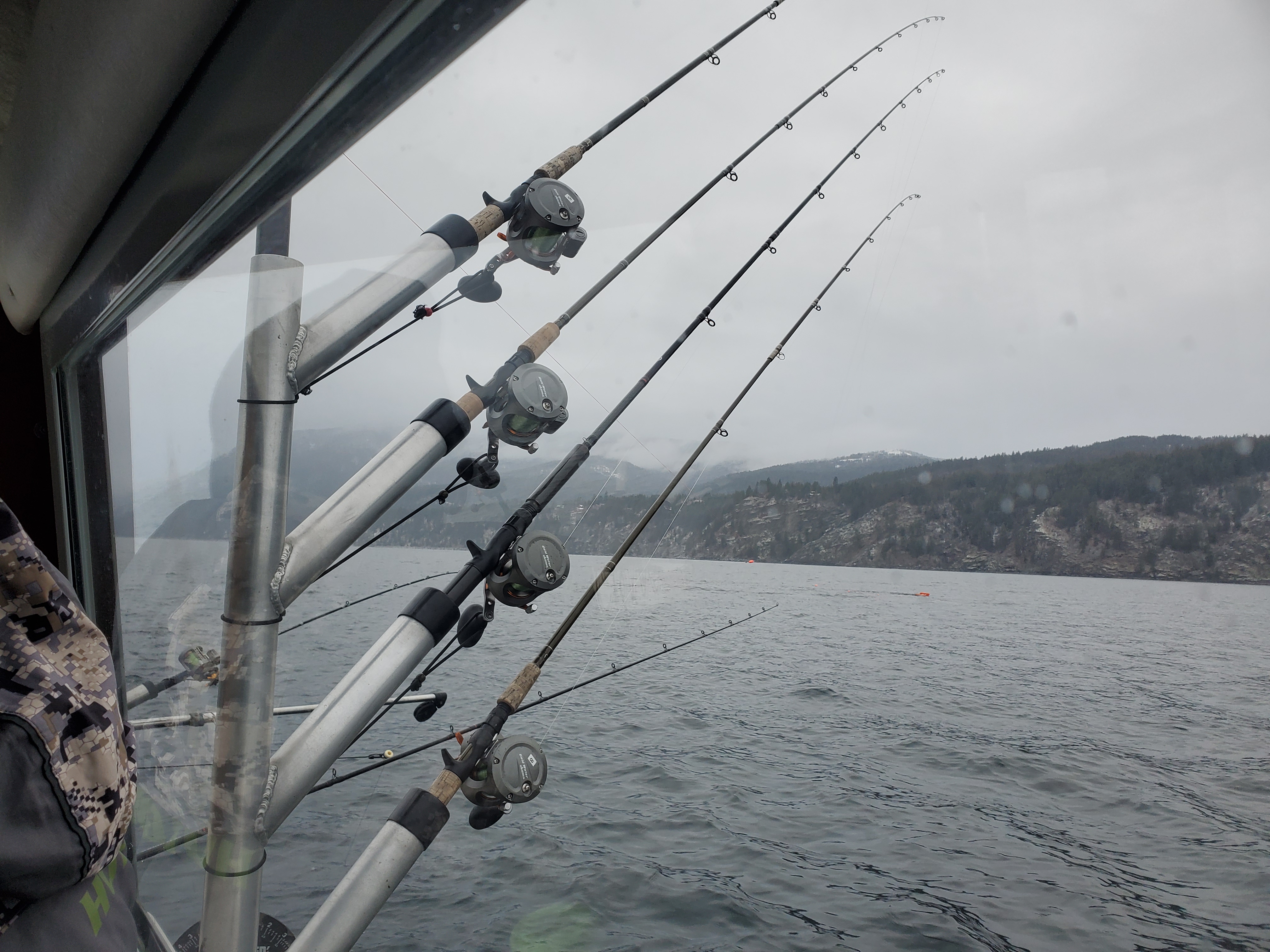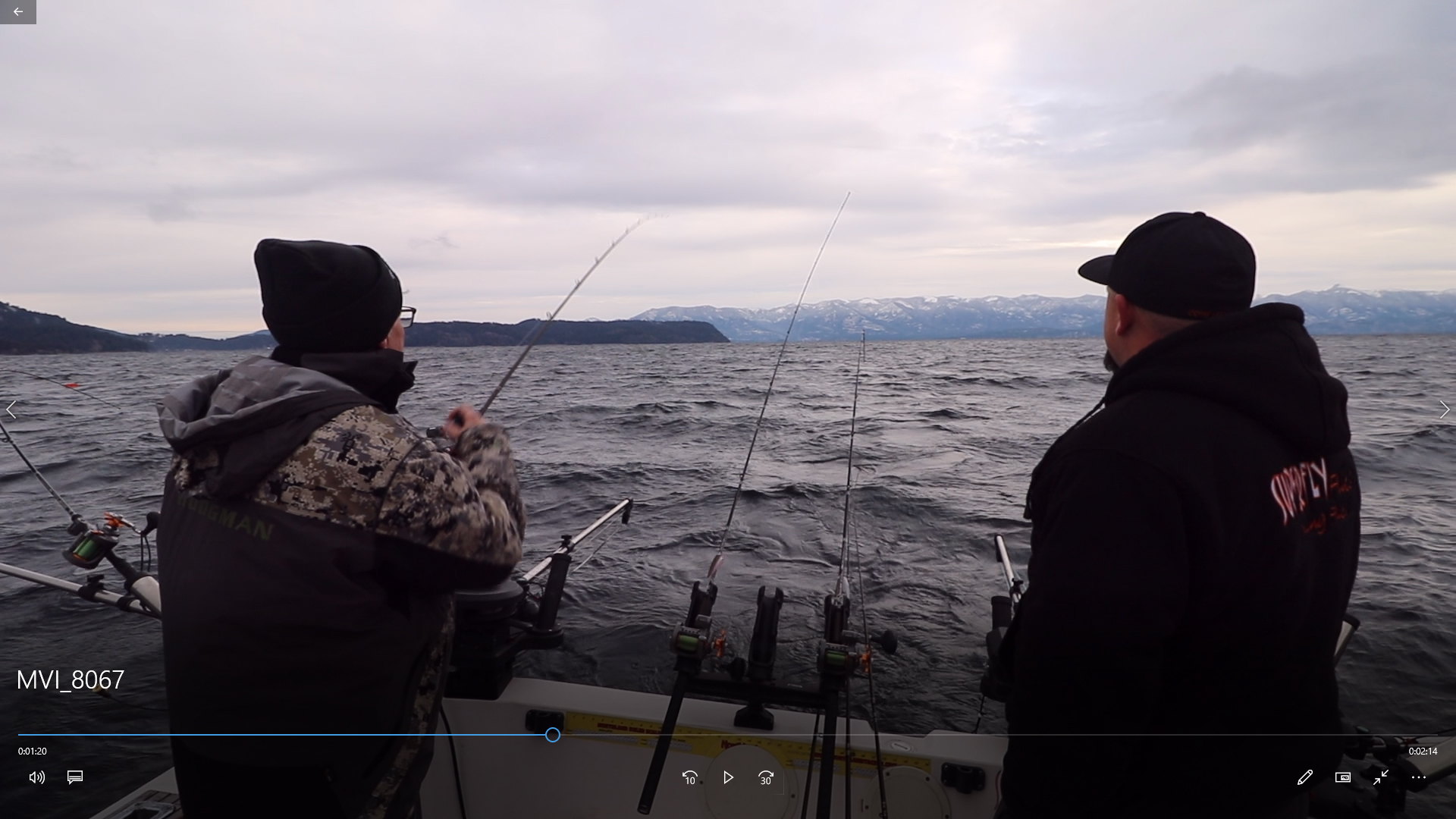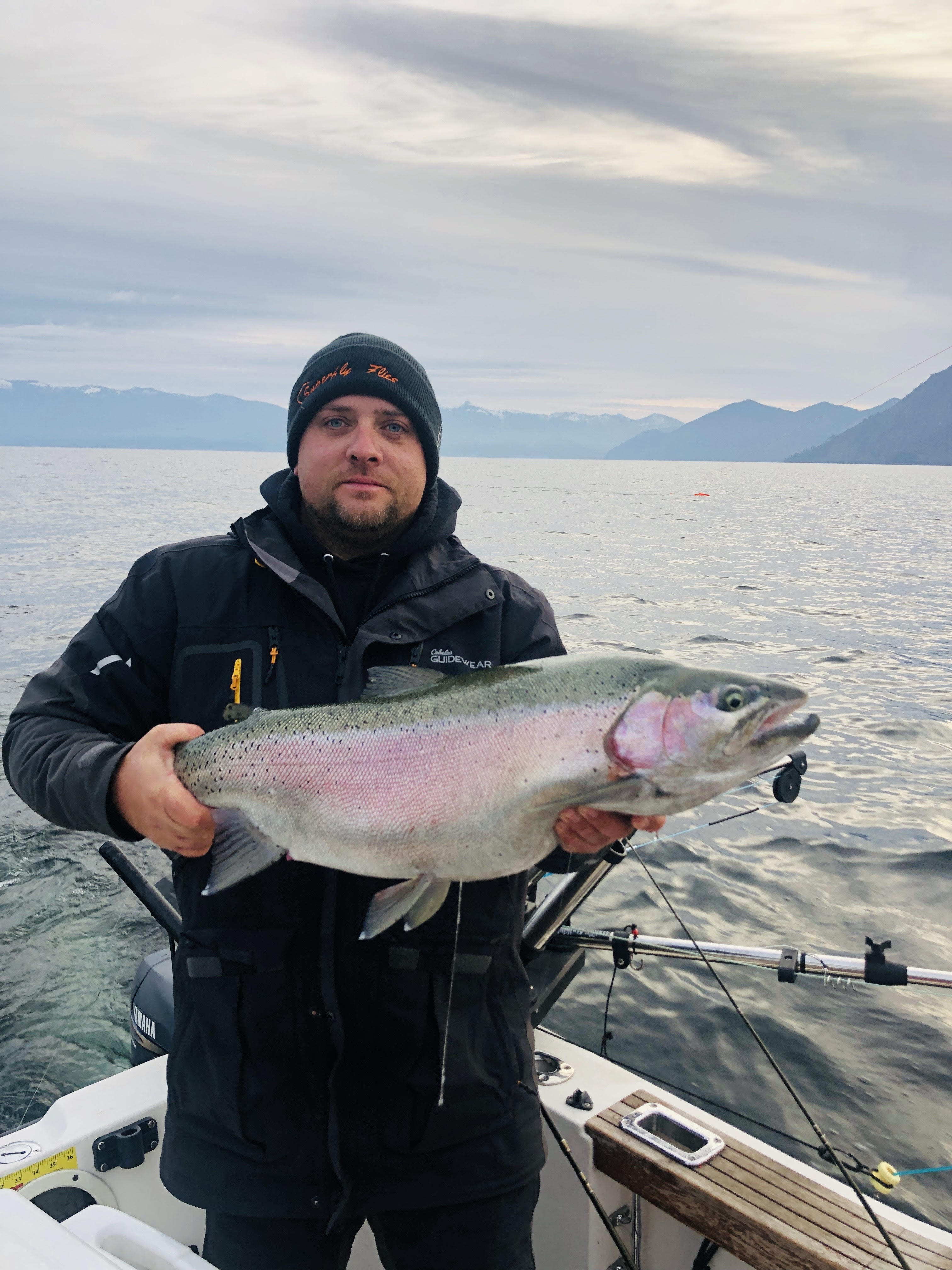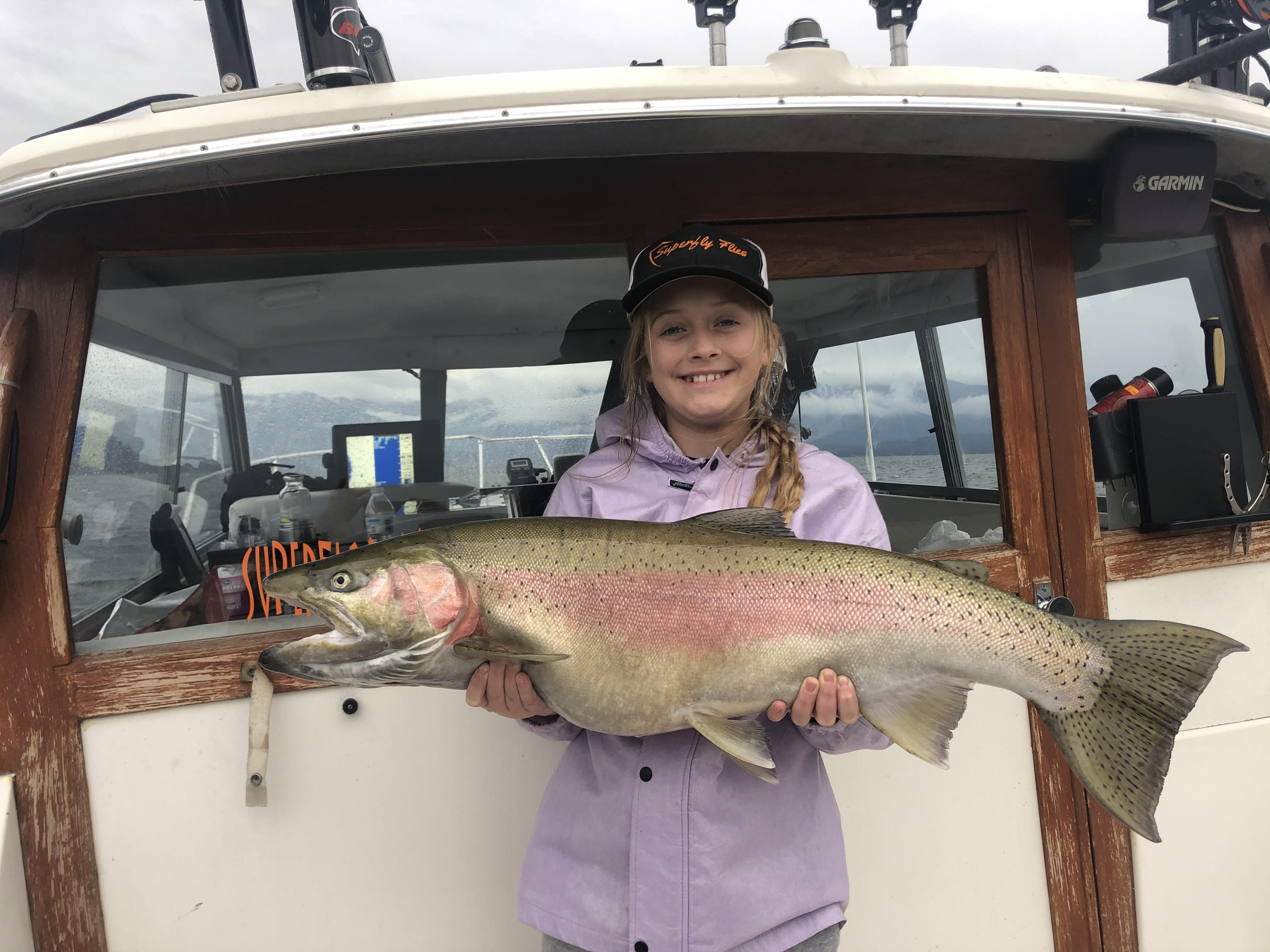Search
Latest Articles
Pend Oreille Gerrard Rainbow Trout
by Mike Carey, January 10, 2021
Aaron Borg and I were fishing with Jeff Laybourne of Superfly Flies. It was my first trip to this beautiful lake in the panhandle of Idaho. The tales I’d heard of this lake and its epic fishery for Kamloops rainbow trout that at one time reached north of thirty pounds had me pretty excited. While the fish aren’t quite as big now, Jeff told us it’s very possible to catch trophy fish in the mid-twenties range. That, my friends, is a big rainbow!
Jeff explained that Kamloops trout are actually a Gerrard-strain of rainbow trout, and come from the deep glacial waters of British Columbia's Lake Kootenay. Lake Pend Oreille holds the world record for non-genetically engineered rainbow trout, a 37-pounder caught in 1947 by Wes Hamlet. While fish over thirty pounds have not been seen for several years, mid-twenties are not unusual and Jeff has caught them consistently ever year.
Jeff had invited us to join him for some winter fishing on board his very comfortable 24 foot hardtop Trophy. With the door closed and the heater on we were about as cozy as you could ask for on a winter day in Idaho, even with the sniff morning winds. Having a larger boat on Pend Oreille is a good thing. It’s not that you can’t fish the lake with a smaller boat, but with 111 miles of shoreline there is a lot of water to cover. And that wind can whip up some pretty big rollers. “I’ve seen and been in water that had six to eight foot rollers – it’s not fun. You really need to pay attention to the forecast and always watch the conditions out here”, Jeff noted.
As Jeff got out his planer boards, I was quick to volunteer to help deploy the gear. For those of you that are gear crazy you’ll love the fact that there is no limit on the number of rods you can fish on this lake. Well, I should say, you’re only limited by the setup of your boat and your own tolerance for running multiple rods. In Jeff’s case, we ran five rods off each planer board and two off downriggers. Now that is an impressive spread!
Planer board fishing is a whole art in itself and one that I think you’ll see used more often in the coming years here in the Pacific Northwest. Once understood the technique is less intimidating than it would seem. The key (as always) is attention to detail and proper spacing of the gear. It helps to be fishing on a huge lake where there is plenty of room to spread out, and to be around fellow boaters that also fish planer boards and understand how to use them. Once deployed it’s easy to rotate rods as they get bit, moving each rod down the planer board line and setting up a new rod at the nearest slot to the boat. Besides the advantage of running all these rods is the ability to try a variety of lures and cover multiple depths. From longlining on the surface to leaded line to dropper weights you can pretty much cover the water column. Throw in a couple downriggers to cover the fish that are deeper than 60 feet and you are in business!
Our working gear today was a variety of flies, plugs, and lures. Of course we had a nice assortment of Superfly Flies in the mix. Visit their website and you’ll be impressed by the quality of these handmade flies and hand-painted plugs.
Fishing for Pend Oreille rainbow is a year-round business. You can find and catch these fish ever month of the year. It may be a bit slower in the winter, but the chance at a twenty plus rainbow in a freshwater lake? Give me a call, I’m there!
Our first fish of the day came shortly after the last rod was deployed and turned out to be a beautiful cutthroat caught on a surface fly. Pend Oreille has an embarrassing wealth of large fish in addition to the rainbows. There are mackinaw, cutthroat, bull trout, and even walleye, to name a few of the fish you might catch while trolling gear. The record for a mackinaw – 43 pounds, caught in 1995. Bull trout? That would be 32 pounds, caught in 1949. Bull trout are listed as endangered and must of course be released, while the lakers are considered competition for the rainbows and anglers are encouraged to keep them. Oh, did I mention cuttbows? Yup, a cross between a cutthroat and a rainbow, the record is an impressive 24 pound specimen caught in 1991.
The key to Pend Oreille’s production of large fish hinges on a delicate balance of feed – in this case the meals these giant fish love most are kokanee. Yup, Pend Oreille has kokanee. At one time, quite a lot of them, however, mackinaw predication and a mysis shrimp collapse reduced the kokanee which in turn reduced the size of the Gerard rainbows, showing once again how nature is an incredibly delicate balancing act. Add to that the appearance of non-native walleye feeding on kokanee and it’s easy to see how quickly this massive ecosystem can get out of balance, so much so that the Idaho Department of Fish and Wildlife began netting the lake to remove walleye. Jeff noted that the lake seems to be moving in the right direction again and the increasing size of the Gerard rainbows shows that. “My boat gets several fish in the mid-twenties every year and fellow anglers have the same success, so I think things in general are moving in the right direction.”
After gently releasing the cutthroat trout we got back to work, covering water, waiting for that trophy rainbow to strike. The wind died down and clouds started to filter in, and shortly thereafter a light and then more steady snowfall greeted us. It was a reminder that while you can fish Pend Oreille year round, you’d best be ready to face the real possibility of winter conditions. Boat ramps are open but make sure you have a four wheel drive vehicle and some sand to spread for icy conditions.
During a lull in the action I questioned Jeff about this unique fishery. As a local, he’s had thousands of hours pursuing these Gerrard Rainbows. Here’s some priceless information he shared with us.
“Pend Oreille is a fishery unlike any fishery in that our rainbows tend follow thermoclines more than their food source. Early spring March-April the rainbows will generally move higher into the water column., from one hundred foot deep to the surface. The fish are bulking back up and getting ready to run up the Clark Fork or Pack River for spawning. This is the only time I find that these fish move into the shallow waters of the west arm of the lake. Plugs, Superflys and bucktail flys are my go to. Perch, green/gold and brighter color tones seem to be the most consistent producers. Slower trolling 1.6-2.2mph trolling speeds is good in the spring.
In the summer and water conditions above 64 degrees the fish will go deeper and remain there until fall. This is the most difficult time to catch them. Typical starting depths are 80’ to 140’. Flasher/superfly, and superplugs are my go to for summer time. As to color – it’s all about glow, glow, and more glow! Slow trolling at around 1.6-1.8 mph is best.
Fall is where things get interesting. Early fall when water temps are falling the fish put on the feed bag in preparation of the pre spawn hibernation of deep winter. We look for the magic number of 54 degrees. After a few windy days the warm water on the top will mix with the colder water layer. When this happens the fish move to the surface. We tend to only fish the surface this time of year with planer boards. Bucktail flies, plugs and apex’s are the choice. We also speed up to 2.3-3.0mph. Fall is the best time to fish for big rainbows. The colors that work best are dependent on the conditions. Light, cloud cover, and sky color can change quickly meaning its good to change up colors often. More natural colors take over the later in the fall we get. This time of year fishing moves primarily to the mid lake areas.”
“Fish, fish, fish!” The downrigger rod doubled over and Jeff’s alert woke me from a mid-day nap. Aaron was first to the rod and as the rod doubled over and line peeled off the reel it was obvious we had found a good fish. “Nice” Aaron, always the verbose angler, said. He steadily worked the fish back to the boat, no small feat as this guy was 120 feet deep and a 150 feet back from the release clip. After a couple nice drag screaming runs Jeff slide the net under him and brought the bright rainbow on board for a quick photo, then back into the water where he spent several minutes reviving the fish and letting him rest, before releasing him back to the lake. We watched as the fish paused and then bolted away, none the worse for his battle.
I asked Jeff if anglers kept many of these big fish, guessing the answer in advance. “The locals don’t keep them, and we discourage anyone from keeping these fish. They are a real treasure and a resource that we want to share to be caught again, so it’s strictly catch and release and no bait on my boat.” The fish Aaron caught was in the ten pound range, and what a beauty he was! I can’t imagine the thrill of landing a mid-twenty pound fish. “Oh, they are quite a battle; it can easily take 20-30 minutes to bring a fish like that to the net. They are incredibly strong fish alright.” Jeff said.
We continued on working down the lake, passing the naval submarine barge along the way. Yup, this lake has a navy acoustic research detachment based out of Bayview. From the Navy’s web page:
"The NSWCCD Acoustic Research Detachment (ARD) is located on Lake Pend Oreille, which is Idaho’s largest, deepest (1,150 feet), and quietest body of water providing an ideal environment for acoustic testing without the attendant problems and costs of open ocean operations. The ARD operates and supports unique Large Scale Submarine Models, Test Ranges, and acoustic test facilities utilized in conducting Research, Development, Test & Evaluation (RDT&E) of submarine acoustic stealth technology."
The snow started coming down a bit heavier, reducing visibility and adding another layer of white to the already majestic mountains surrounding the lake. For beautiful fishing destinations Pend Oreille is hard to beat! Since I had a plane to catch in a few hours back in Spokane, we decided to call it a day. As we began the process of bringing in twelve fishing rods Jeff hooked into a nice 18” rainbow. “This happens a lot bringing in the lines. The change in speed and presentation often triggers a bite.” The beautiful rainbow was safely released back to the lake to grow bigger.
Back at the dock we thanked Jeff for a fun winter day on the water. We didn’t get that 25 pound rainbow so it’s still swimming around waiting for you. I hope you’ll plan a trip to Pend Oreille to drop a line and get your chance to yell “Fish On!” with a 25 pound Gerrard Rainbow on the other end of your line!
Check out Jeff's awesome lineup of handmade flies and plugs at Superflyflies.com.
